Rough Idle After Start, And/Or A Service Engine Soon (SES) Light (Unstick And Clean Central Sequential Fuel Injection (CSFI) Poppet Valves or Convert to MFI)

| Subject: | Rough Idle After Start, And/Or A Service Engine Soon (SES) Light (Unstick And Clean Central Sequential Fuel Injection (CSFI) Poppet Valves or Convert to MFI) |
| Models: | 1995-2002 Chevrolet and GMC S/T Models |
| 1996-2002 Chevrolet and GMC C/K, M/L, G, P Models |
| 1996-2001 Oldsmobile Bravada |
| 1999-2000 Cadillac Escalade |
| with 4.3L, 5.0L or 5.7L Engine (VINs W, X, M, R -- RPOs L35, LF6, L30, L31) |
| Except 2002 VIN X -- RPO LU3 Models |
This bulletin is being revised to update the Correction and Warranty Information. Please discard Corporate Bulletin Number 00-06-04-003A (Section 06 -- Engine).
Condition
Some customers may comment on rough idle after start-up, especially if the vehicle has sat overnight. These symptoms may be intermittent. The Service Engine Soon (SES) light may also be illuminated. Current misfire or history misfire codes may be detected with the Tech 2 scan tool.
Cause
A deposit build-up on the CSFI poppet valve ball and/or seat may cause the poppet ball to stick open or closed. In either case, the specific cylinder will be mis-fueled, resulting in a cylinder mis-fire condition.
Correction
A new injector unsticking and cleaning process has proven to be effective in restoring poppet valves to an "as new" condition. CSFI injector replacement should NOT be considered as a correction for this customer concern.
Check the vehicle history to determine if the vehicle is returning for a second fuel system repair for this condition. If the fuel system has been repaired for this condition previously, then inform the customer that an alternate fix is available. A new MFI fuel system has been developed that will back service the CSFI fuel system. The MFI fuel system eliminates the CSFI poppet valve ball and seat. The CSFI fuel system will need to be replaced as a unit. Refer to Central SFI to MFI Conversion instructions in this bulletin.
Notice: Individual CSFI injectors can not be replaced with MFI injectors. The entire CSFI fuel meter body will need to be replaced. The bracket used to retain the injectors in the fuel meter body is different between the CSFI and MFI unit. The unit may not seal if you mix injectors. Severe engine damage could result.
Cleaning the CSFI injectors is the preferred repair. The CSFI unit should not be replaced until cleaning has been attempted. If the vehicle should return for the same repair, then the CSFI unit can be replaced with an MFI unit. If the vehicle is out of warranty, the customer should be given the option of which fix to pursue.
Important: "GM of Canada" dealers require District Service Manager approval prior to replacing the CSFI unit with a MFI unit under warranty.
The first step of this process is to use the J 41413 Evap Pressure/Purge Station, in conjunction with the J 44466-10 pressure regulator/hose assembly, to provide the required high pressure (150 psi) source to perform the unsticking procedure. The J 39021 fuel injector tester and accessories provide the means to "energize" the injector. Some later model-year vehicles may utilize the Tech 2® to "energize" the injectors.
The second step of this process is to run the engine on a solution of 10% Top Engine Cleaner and 90% gasoline. This will effectively clean any deposits from the ball and seats of the poppets. It is very important that the engine fuel system is separated from the vehicle fuel system. Top Engine Cleaner may have detrimental effects on the fuel pump.
Cleaning Procedures
This procedure should be performed before any attempt to convert the fuel system to MFI.
S/T and C/K Truck
- Loosen the fuel filler cap to relieve vapor pressure in the fuel tank.
- Remove the Positive Crankcase Ventilation (PCV) clean air tube from the air inlet tube and set aside.
- Remove the bonnet and inlet tube from the throttle body.
- Remove the brake booster vacuum hose and connector from the intake manifold.
- Remove the electrical connector from the CSFI fuel metering body.
- Remove ignition wires 1, 3, 5, (7) from the distributor cap.
- Remove the fuel line bolt (4) at the rear of the intake manifold.
- Relieve the fuel system pressure at the service fitting on the fuel line. Use a shop towel to contain any fuel that may exit the service fitting.
- Remove the nuts (1) and clamp (2) from the fuel pipe.
- Remove the fuel pipes from the metering body. Be careful not to disturb the O-rings, washer, and spacer in the metering body.
- Install the J 44466-12 (2) and the J 44466-13 (1) to the metering body and tighten. Make sure that the fuel pipe O-rings, washer, and spacers are present and in their proper position.
- Install the J 44466-11 (4), clamp (2), and J 44466-13 (1) to the fuel pipe and tighten.
- Obtain the J 41413, close the valve (2) on the tank, and remove the regulator assembly.
- Install the J 44466-10 (5) to the J 41413 tank (3). The J 44466-10 regulator is preset to 150 psi.
- Connect the J 44466-10 hose (1) to the J 44466-12 (3).
- Install the J 39021 Injector/Coil Balance Tester, the J 39021-210 Injector Tester Adapter Box, and J 39021-301 V6 Fuel Injector Test Adapter (1) or J 39021-302 V8 Fuel Injector Test Adapter to the metering body electrical connector.
- Adjust the amperage selector switch on J 39021 to 0.5 amps.
- Open the valve (2) on the tank (3).
- Open the valve (4) on the J 44466-10 to pressurize the fuel system. The minimum pressure required on the gauge (6) is 150 psi. If 150 psi is not obtained, the tank (3) must be refilled prior to performing this procedure.
- Close the valve (4) on the J 44466-10.
- Energize one injector using the J 39021. Observe a pressure drop on the gauge (6) and verify the injector/poppet valve operation. An injector/poppet that is "stuck" and not operational will have no pressure drop on the gauge. If an injector remains "stuck", repeat the procedure multiple times (as required) until the injector is operational.
- Repeat steps 19, 20 and 21 for each individual injector to verify that all injector/poppet valve assemblies are "unstuck" and functional.
- Shut off pressure valve (2) on the tank (3) of the J 41413.
- Bleed off the pressure at the J 44466-10.
- Disconnect and remove the J 44466-10 (5) from the J 44466-12, and the J 41413.
- Remove the J 39021-301 or J 39021-302, J 39021-210, and J 39021 from the metering body.
- Install the vehicle electrical connector to the metering body.
- Install the brake booster vacuum hose and connector to the intake manifold.
- Install ignition wires 1, 3, 5, (7) to the distributor cap.
- Install the air inlet bonnet to the throttle body, tighten the wing-nut.
- Install the PCV fresh air tube to the air inlet tube.
- Obtain J 35800-A (2). Make sure the valve at the bottom of the canister (3) is closed.
- Remove the canister top and add 24 ml (0.8 fl.oz.) Top Engine Cleaner, P/N 1050002 (Canada P/N 992872), to the canister.
- Fill the remainder of the canister with regular unleaded gasoline and install the canister top.
- Suspend J 35800-A from a convenient underhood location.
- Connect the hose from J 35800-A to the service port on the J 44466-12.
- Open the valve (3) at the bottom of J 35800-A.
- Connect a "shop air" source to the fitting at the top of J 35800-A and adjust the regulator (1) to 75 psi.
- Start the vehicle. It may be necessary to re-adjust the J 35800-A pressure regulator to maintain 75 psi.
- Let the vehicle run at idle until the canister is empty and the vehicle stalls.
- Remove the shop air supply from J 35800-A.
- Depressurize the J 35800-A.
- Disconnect the J 35800-A hose from the J 44466-12.
- Remove the PCV clean air tube from the air inlet tube and set aside.
- Remove the bonnet from the throttle body, and set aside.
- Remove ignition wires 1, 3, 5, (7) from the distributor cap.
- Remove the brake booster vacuum hose and connector from the intake manifold.
- Bleed the residual pressure from the J 44466-12.
- Remove J 44466-13 (1) and J 44466-12 (2) from the metering body.
- Remove J 44466-13 (1), clamp (2), and J 44466-11 (4), from the fuel pipe (3).
- Install the fuel pipe (3) to the metering body. Make sure that all of the O-rings (6 and 8), washers (7), and spacers (5) are present and in their proper position.
- Install the clamp (2) and nuts (1).
- Apply threadlock, P/N 12345382, or equivalent to the threads of the fuel pipe bolt (4). Install the bolt.
- Install the brake booster vacuum hose and connector to the intake manifold.
- Install the bonnet and air inlet tube to the throttle body.
- Install the PCV fresh air tube to the inlet duct.
- Install ignition wires 1, 3, 5, (7) to the distributor cap.
- Add one (1) ounce of Port Fuel Injector Cleaner, P/N 12345104 (Canada P/N 10953467), to the vehicle fuel tank for each gallon of gasoline estimated to be in the tank. Instruct the customer to add the remainder of the bottle of Port Fuel Injector Cleaner to the vehicle fuel tank at the next fill-up. Further recommend that Port Fuel Injector Cleaner be added to the fuel tank every 3000 miles (4800 km) particularly if the vehicle is not started and driven every day. Inform the customer that the Port Fuel Injector Cleaner is not to be used at every fill up but may be reapplied every 3000 miles (4800 km).
- Tighten the fuel tank filler cap.
- Start the vehicle and check for fuel leaks.
- Using the Tech 2® scan tool, check for any stored Powertrain DTC codes. Clear codes as required.
- Disconnect the Tech 2® Scan tool.
- Advise the customer to change brands of fuel.
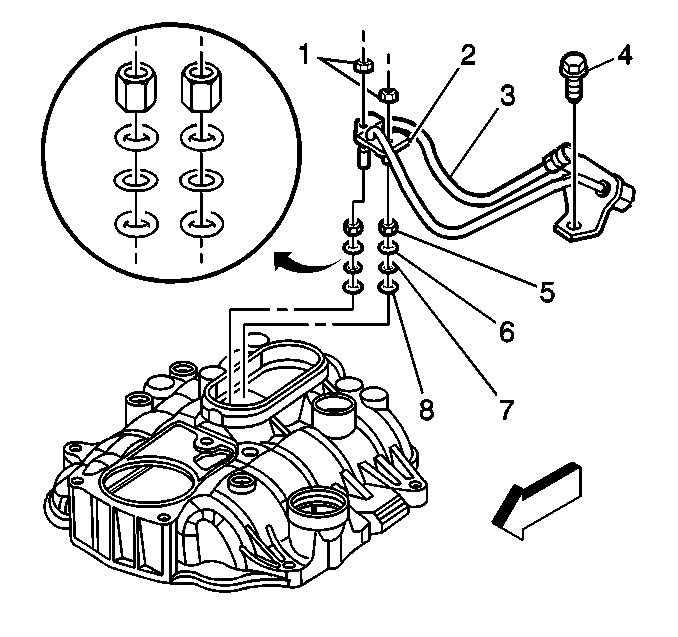
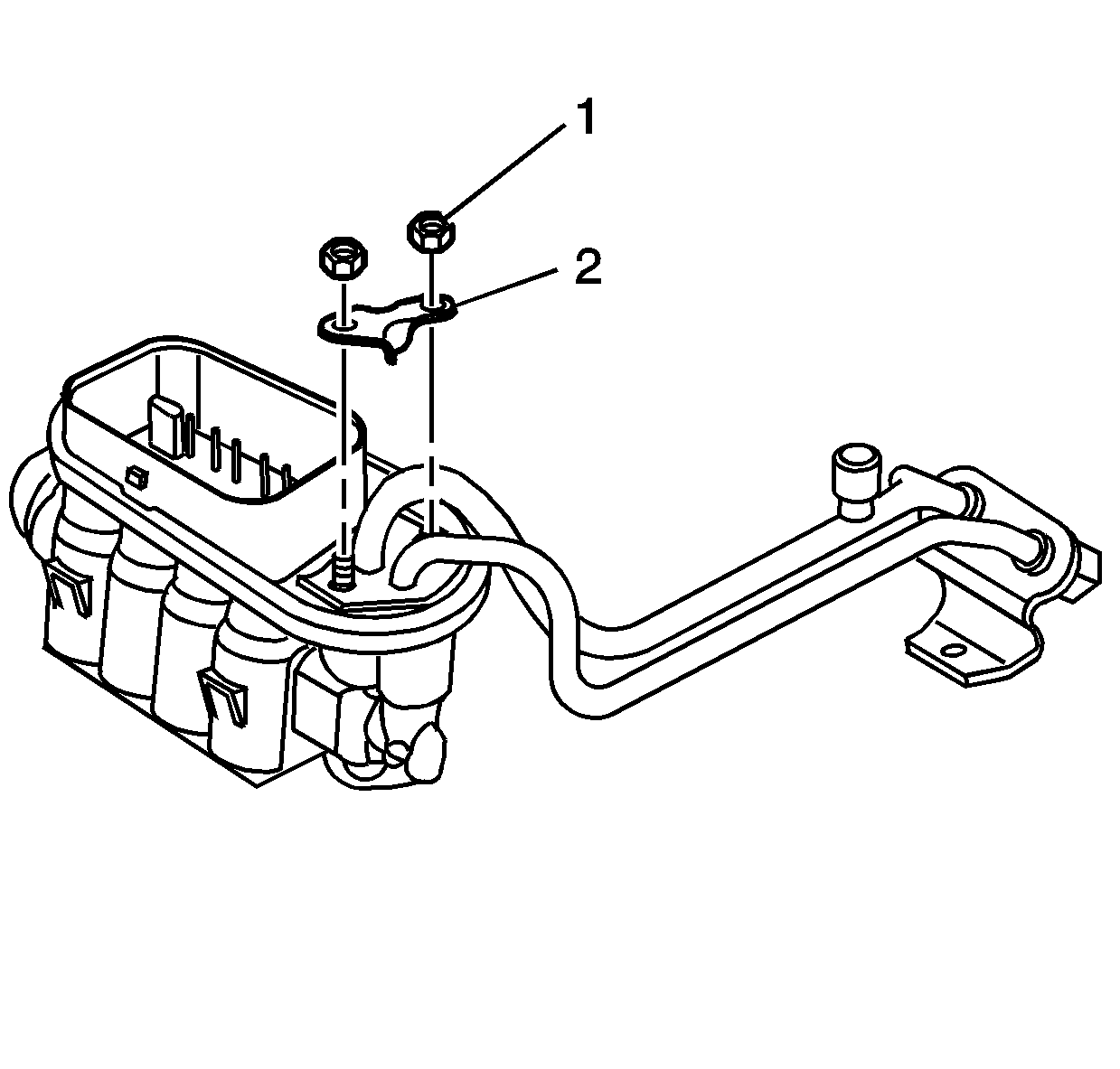
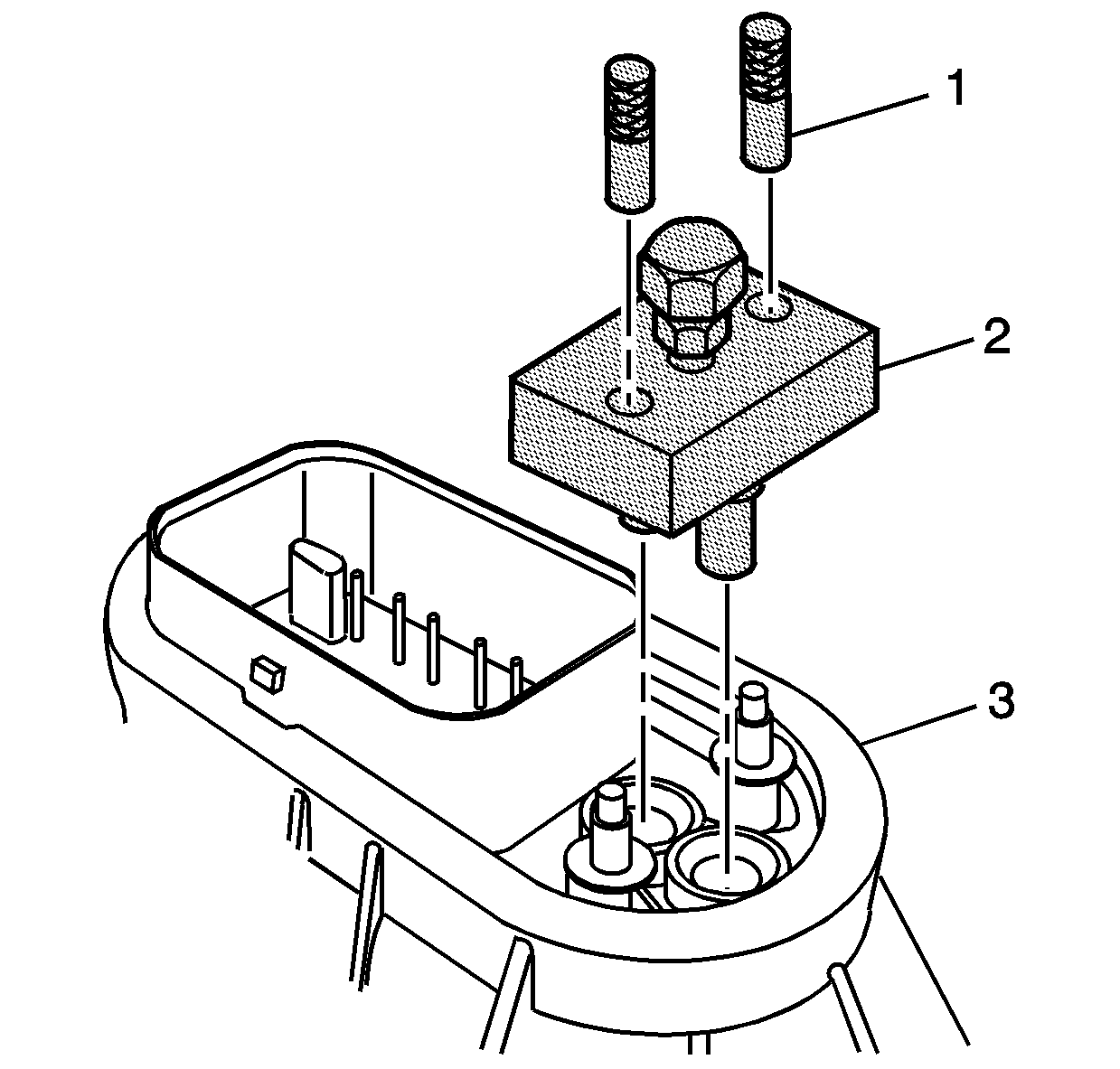
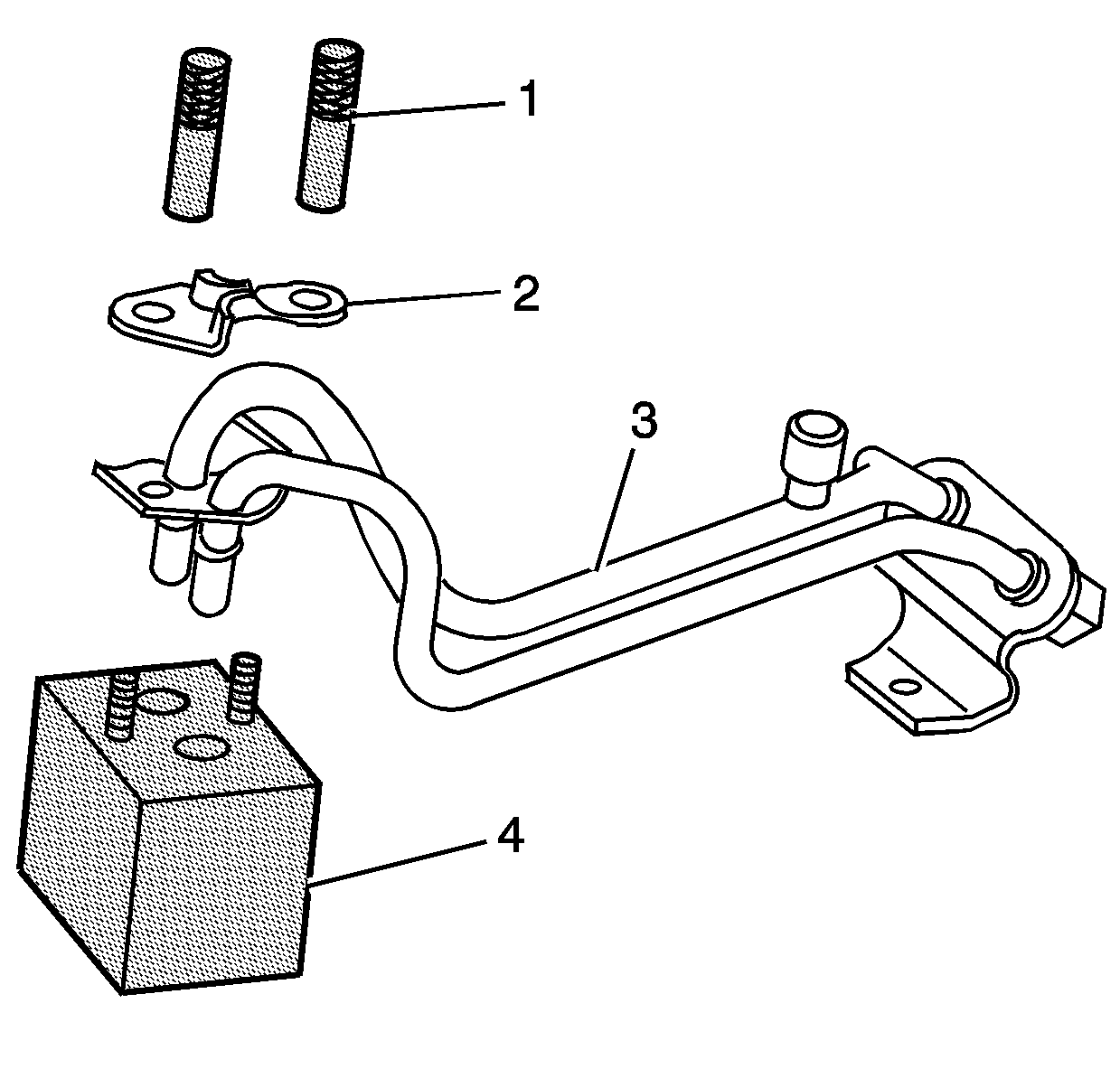

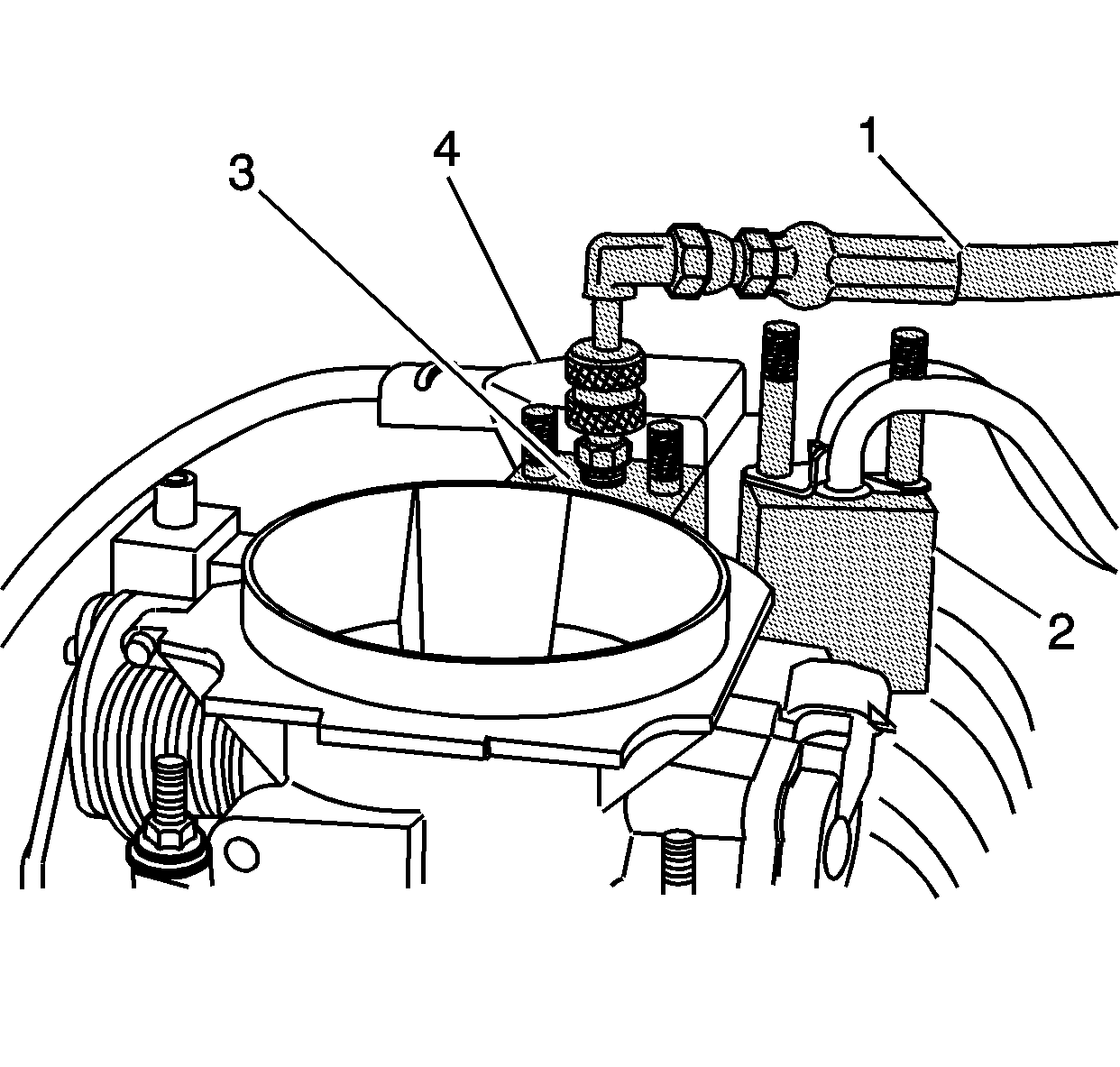

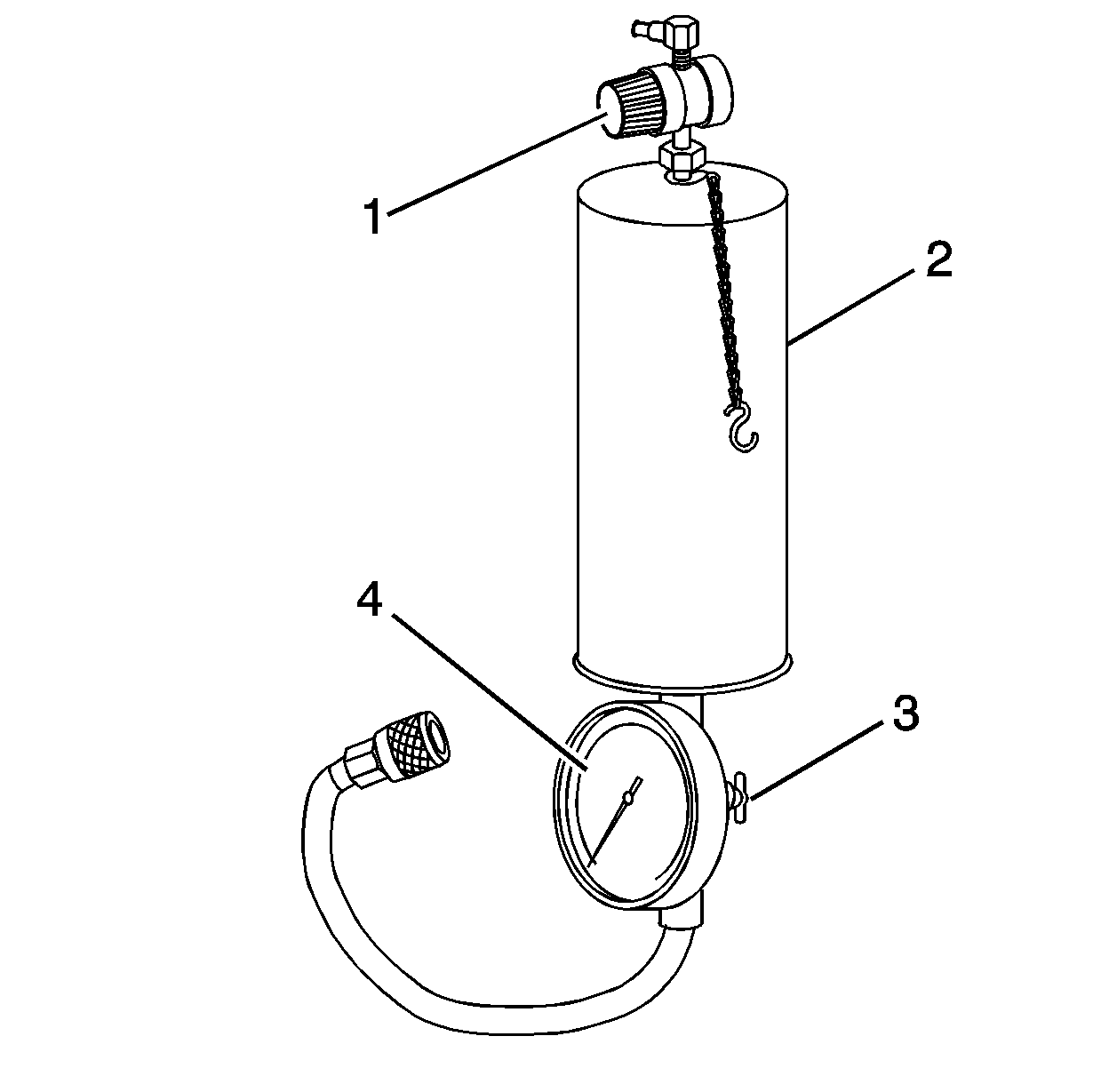



Tighten
Tighten the nuts to 3 N·m (27 lb in).
Tighten
Tighten the fuel pipe bolt to 6 N·m
(53 lb in).
M/L, G Van and P Truck
- Loosen the fuel tank filler cap to relieve fuel tank vapor pressure.
- Remove the engine cover.
- Remove ignition wires 1, 3, 5, (7) from the distributor cap.
- Remove the vacuum brake booster hose and connector from the intake manifold.
- Remove the fuel pipe bolt (4) at the rear of the intake manifold.
- Relieve the fuel system pressure at the service fitting on the fuel pipe. Use a shop towel to contain any fuel that may exit the service fitting.
- Disconnect the fuel pipes (3) at the rear of intake manifold (1).
- Remove the nuts (1) and clamp (2) from the fuel pipe.
- Remove the fuel pipes from the metering body. Be careful not to disturb the O-rings, washer, and spacer in the metering body.
- Remove the electrical connector from metering body.
- Install J 44466-12 (2) and J 44466-13 (1) to the fuel metering body and tighten. Make sure that the fuel pipe O-rings, washer, and spacers are present and in their proper position.
- Install J 44466-01 (1) to the vehicle fuel lines.
- Obtain the J 41413, close the valve (2) on the tank, and remove the regulator assembly.
- Install the J 44466-10 (5) to the J 41413 tank (3). The J 44466-10 regulator is preset to 150 psi. The minimum pressure required on the gauge (6) is 150 psi. If 150 psi is not obtained, the tank must be refilled prior to performing this procedure.
- Connect the J 44466-10 hose to the J 44466-12.
- Install J 39021 Injector/Coil Balance Tester, the J 39021-210 Injector Tester Adapter Box, and J 39021-301 V6 Fuel Injector Test Adapter or J 39021-302 V8 Fuel Injector Test Adapter to metering body electrical connector.
- Adjust the amperage selector switch on J 39021 to 0.5 amps.
- Open the valve (2) on the tank (3).
- Open the valve (4) on the J 44466-10 to pressurize the fuel system.
- Close the valve (4) on the J 44466-10.
- Energize one injector using the J 39021. Observe a pressure drop on the gauge (6) and verify the injector/poppet valve operation. An injector/poppet that is "stuck" and not operational will have no pressure drop on the gauge. If an injector remains "stuck", repeat the procedure multiple times (as required) until the injector is operational.
- Repeat steps 19, 20, and 21, for each individual injector to verify that all injector/poppet valve assemblies are "unstuck" and functional.
- Shut off the pressure valve (2) on the tank (3) of the J 41413.
- Bleed off pressure at J 44466-10.
- Disconnect and remove the J 44466-10 hose from the J 44466-12 and the J 41413.
- Remove the J 39021-301 or J 39021-210, J 39021-210, and J 39021 from the metering body.
- Install the vehicle electrical connector to the metering body.
- Install ignition wires 1, 3, 5, (7) to the distributor cap.
- Install the vacuum brake booster hose and connector to the intake manifold.
- Obtain J 35800-A (2). Make sure the valve (3) at the bottom of the canister is closed.
- Remove the canister top and add 24 ml (0.8 fl.oz.) Top Engine Cleaner, P/N 1050002 (Canada P/N 992872), to the canister.
- Fill the remainder of the canister with regular unleaded gasoline and install the canister top.
- Suspend the J 35800-A in a convenient location.
- Connect the hose from the J 35800-A to the service port on the J 44466-12.
- Open the valve (3) at the bottom of J 35800-A.
- Connect a "shop air" source to the fitting at the top of J 35800-A and adjust the regulator (1) to 75 psi.
- Start the vehicle. It may be necessary to re-adjust the J 35800-A pressure regulator to maintain 75 psi.
- Let the vehicle run at idle until the canister is empty and the vehicle stalls.
- Remove the shop air supply from J 35800-A.
- Depressurize the J 35800-A.
- Disconnect the J 35800-A hose from the J 44466-12.
- Remove the vacuum brake booster hose and connector from the intake manifold.
- Remove ignition wires 1, 3, 5, (7) from the distributor cap.
- Bleed the residual pressure from J 44466-12.
- Remove the J 44466-13 (1) and J 44466-12 (2) from the metering body.
- Remove the J 44466-01 (1) from the vehicle fuel lines.
- Install the fuel pipe (3) to the metering body. Make sure the all of the O-rings (6 and 8), washers (7), and spacers (5) are present and in their proper position.
- Install the clamp (2) and nuts (1).
- Inspect the O-rings at the fuel pipe-to-vehicle lines (1). Replace as necessary.
- Apply threadlock, P/N 12345382, or equivalent to the threads of the fuel pipe bolt. Install the bolt.
- Install ignition wires 1, 3, 5, (7) to the distributor cap.
- Install the vacuum brake booster hose and connector to the intake manifold.
- Add one (1) ounce of Port Fuel Injector Cleaner, P/N 12345104 (Canada P/N 10953467), to the vehicle fuel tank for each gallon of gasoline estimated to be in the tank. Instruct the customer to add the remainder of the bottle of Port Fuel Injector Cleaner to the vehicle fuel tank at the next fill-up. Further recommend that Port Fuel Injector Cleaner be added to the fuel tank every 3000 miles (4800 km) particularly if the vehicle is not started and driven every day. Inform the customer that the Port Fuel Injector Cleaner is not to be used at every fill up but may be reapplied every 3000 miles (4800 km).
- Tighten the fuel tank filler cap.
- Start the engine and check for fuel leaks.
- Use the Tech 2® Scan Tool to check for any stored Powertrain DTC codes. Clear codes as required.
- Disconnect the Tech 2® Scan tool.
- Install the engine cover.
- Advise customer to change brands of fuel.

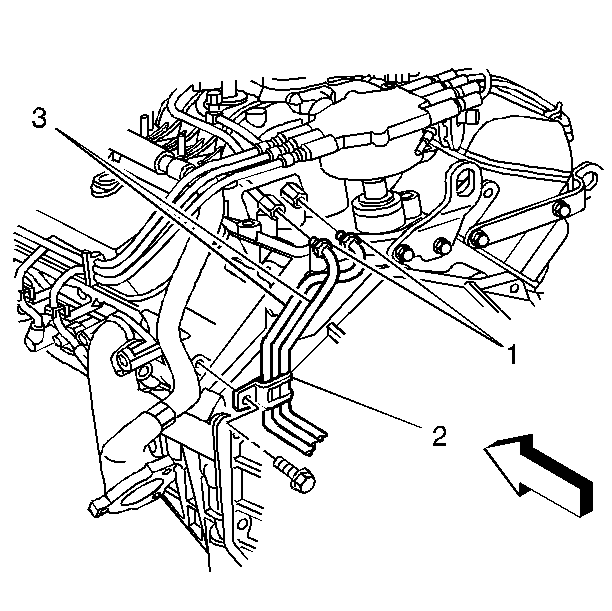









Tighten
Tighten the nuts to 3 N·m (27 lb in).

Tighten
Tighten the fuel line nuts to 30 N·m
(22 lb ft).
Tighten
Tighten the fuel pipe bolt to 6 N·m
(53 lb in).
Central SFI to MFI Conversion Instructions
This procedure outlines the steps required to replace the existing Central SFI Fuel System with a new MFI (Multiport Flexible Injection) Fuel System. Be sure to use the appropriate year and model Service Manual for proper disassembly and re-assembly procedure(s).
Important: Cleaning the CSFI injectors is the preferred repair. The CSFI unit should not be replaced until cleaning has been attempted. If the vehicle should return for the same repair, then the CSFI unit can be replaced with a MFI unit. If the vehicle is out of warranty, the customer should be given the option of which fix to pursue.
V6 Engines
- Remove Upper Intake Manifold plenum and SFI Fuel Meter Body according to Service Manual Procedures.
Figure 1
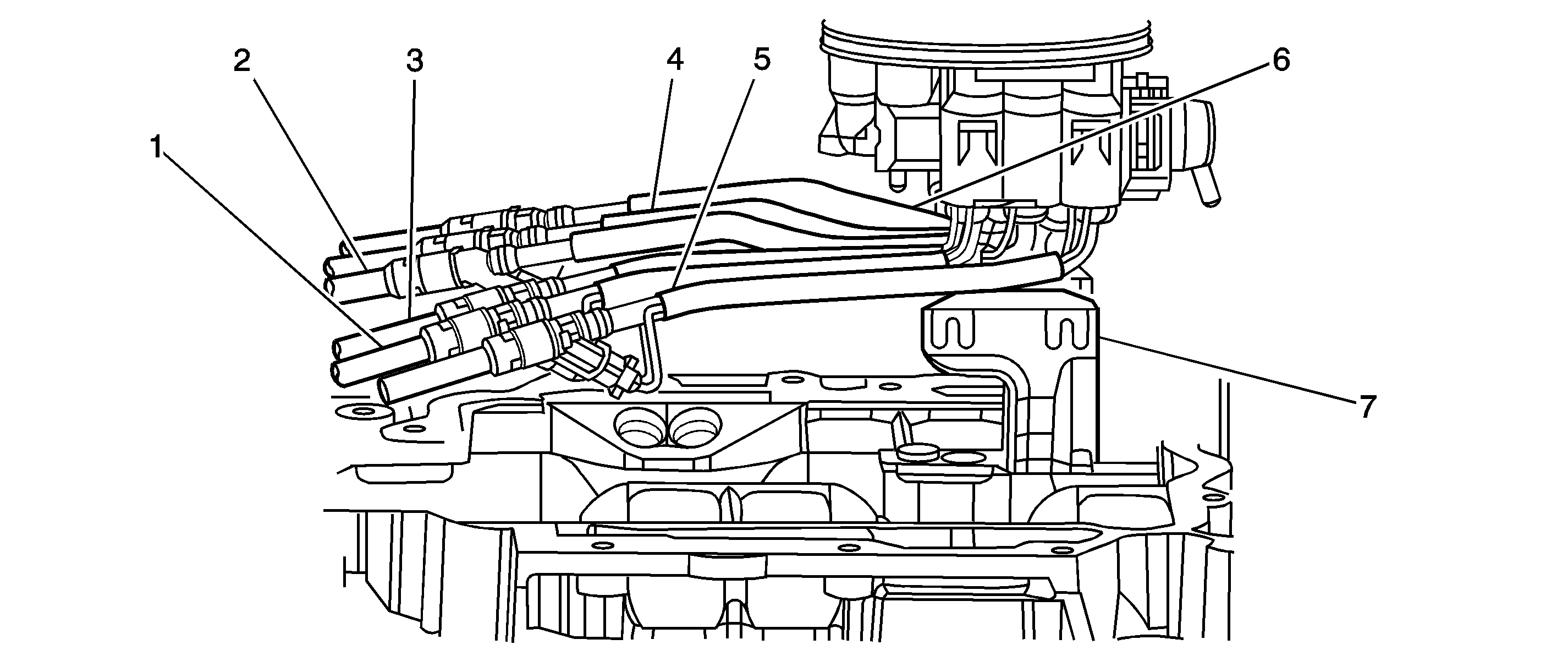
V8 Engines
This procedure outlines the steps required to replace the existing Central SFI Fuel System with a new MFI (Multiport Flexible Injection) Fuel System. Be sure to use the appropriate year and model Service Manual for proper disassembly and re-assembly procedure(s).
- Remove Upper Intake Manifold plenum and SFI Fuel Meter Body according to Service Manual Procedures.
- Remove the Fuel Meter Body bracket and discard. Install the new bracket.
- Position Fuel Tubes of MFI Fuel Meter Body as shown in Figure 3. Fuel tubes 1, 3, 5, and 7 are oriented toward the fuel inlet side of the fuel meter body. Fuel tubes 2,4,6, and 8 are oriented toward the fuel pressure regulator side if the fuel meter body.
- Insert the MFI Fuel Meter Body into the Fuel Meter Body Bracket on the Lower Intake Manifold being careful not to bind the Fuel Tubes. Push down firmly on the fuel meter body until the tabs snap into the bracket locking the fuel meter body in place.
- Orient the fuel tubes to coincide with their corresponding cylinder. The fuel tubes are numbered on the side of the fuel meter body and the corresponding cylinder number is cast in the intake manifold.
- Insert the fuel tubes into their corresponding holes in the intake manifold. Install tubes for cylinders 1, 3, 6 and 8 making sure that the injector electrical connectors are facing in toward the center of the manifold.
- Insert fuel tubes for cylinders 2,4,5, and 7 in the same manner.
- Lubricate the Fuel Meter Body Upper Manifold O-ring (blue in color) with clean engine oil.
- Inspect Upper Intake Manifold Gasket and replace if necessary. Reinstall the Upper Intake Manifold plenum following the procedures in the Service Manual.
Figure 3
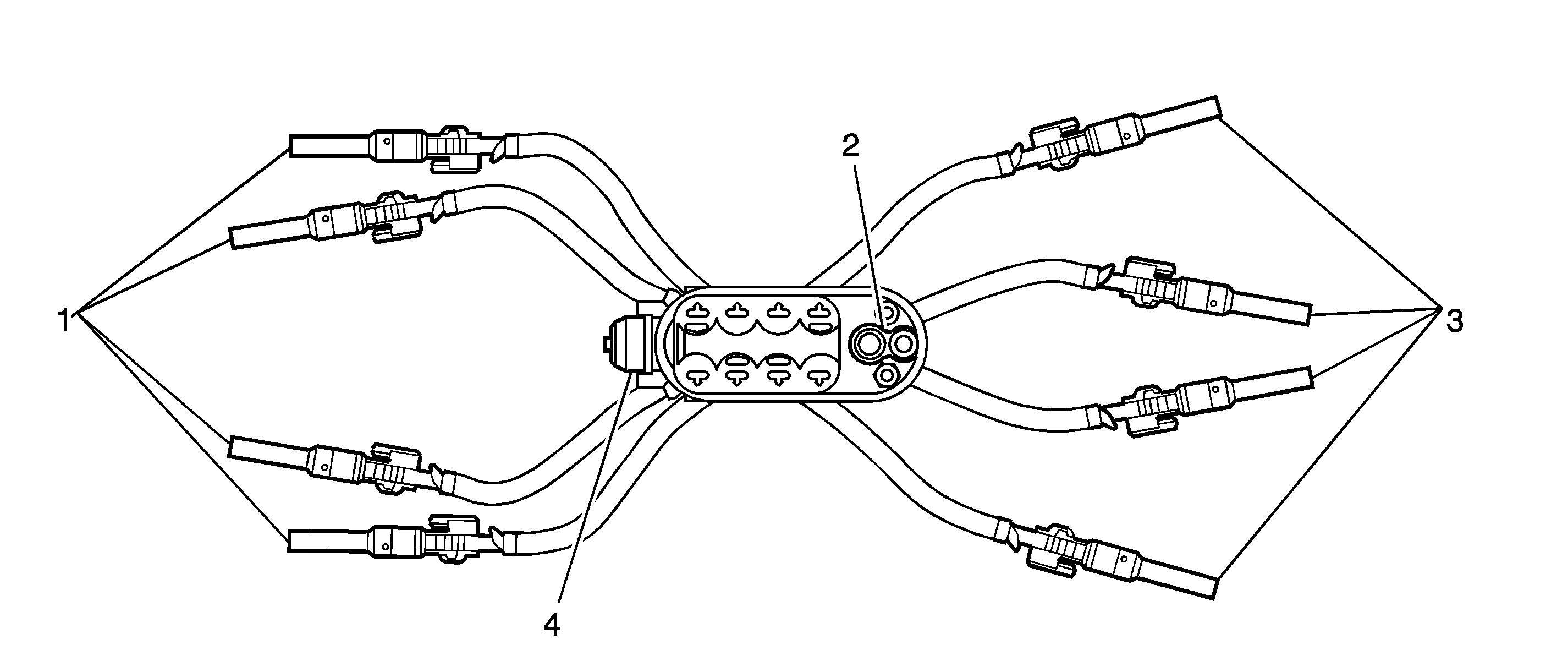
| (1) | Cyl. 2, 4, 6 and 8 tubes |
| (2) | Fuel Inlet |
| (3) | Cyl. 1, 3, 5 and 7 tubes |
| (4) | Fuel Pressure Regulator |
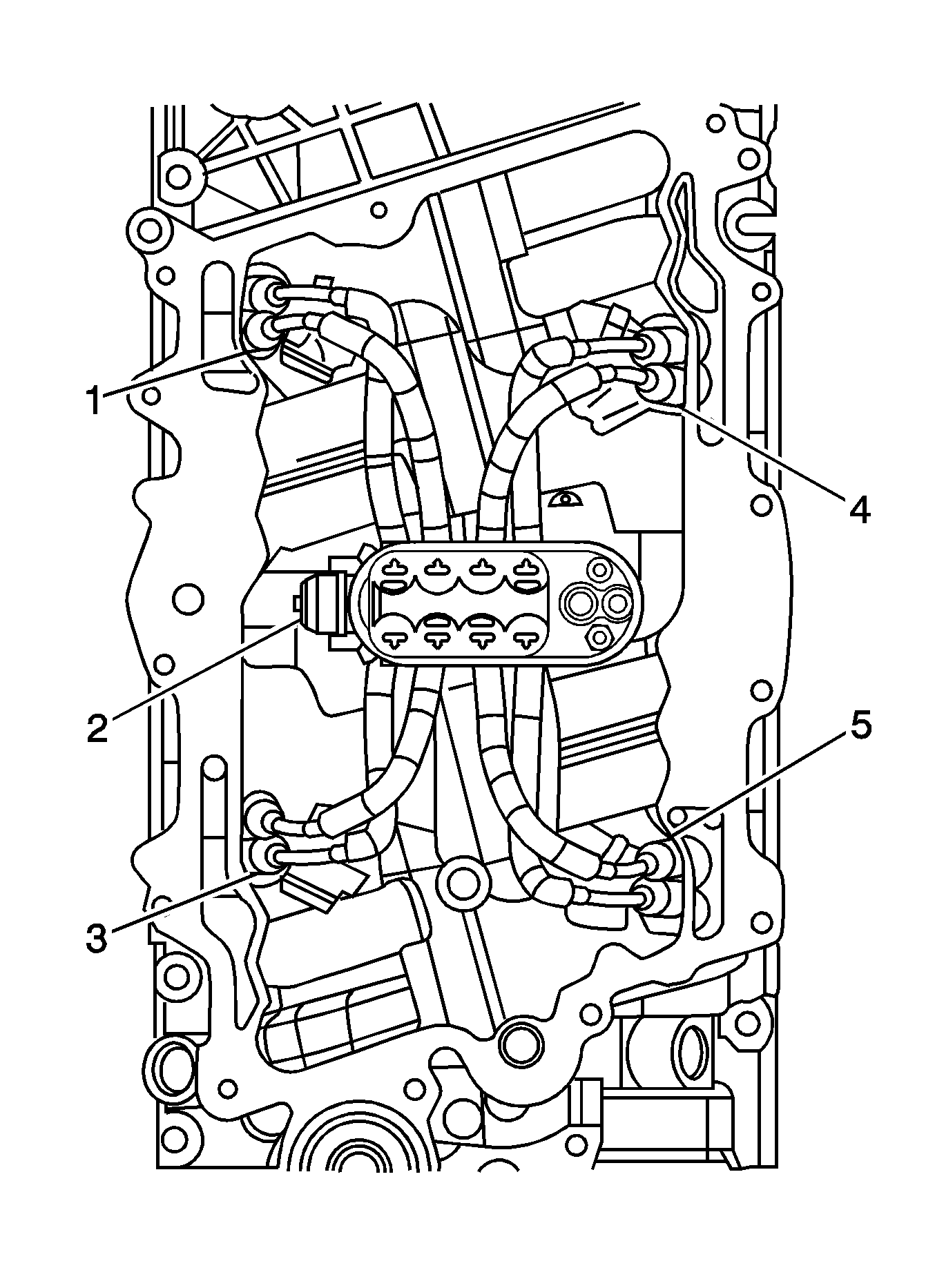
| (1) | Cylinders 6 & 8 |
| (2) | Fuel Pressure Regulator |
| (3) | Cylinders 2 & 4 |
| (4) | Cylinders 5 & 7 |
| (5) | Cylinders 1 & 3 |
Notice: Use caution when inserting injectors into lower intake manifold to be sure the correct injector is being placed into the correct hole.
Injectors should not be removed once they have been installed. Removal of injectors from the intake manifold may cause damage to the retaining lugs on the injector.Important: The Injector holes are numbered on the Lower Intake Manifold. The injectors are numbered on the side of the Fuel Meter Body.
Important: When installing fuel tubes, it is important that the tubes are oriented properly to provide minimal interference when installing the upper intake manifold plenum. Intake holes for cylinders 2, 4, 5, and 7 are closer to the fuel meter body. It is necessary to cross tube 5 over tube 7 and tube 4 over tube 2 as shown in Figure 4.
Notice: Lack of lubrication will make installation of the Upper Intake Manifold plenum difficult and may cause damage to the O-ring.
Important: Lubricate the Fuel Inlet and Return Lines with clean engine oil before inserting them in the of the Fuel Meter Body.
Make sure that Fuel Line Retaining Bracket is properly oriented with the tabs down.Parts Information
Cleaning Procedure Parts
Part Number | Description |
|---|---|
12345382 | Threadlock |
1050002 | Top Engine Cleaner (U.S.) |
992872 | Top Engine Cleaner (Canada) |
12345104 | Port Fuel Injector Cleaner (U.S.) |
10953467 | Port Fuel Injector Cleaner (Canada) |
CSFI to MFI Conversion Parts
Part Number | Description |
|---|---|
12568332 | V-6 MFI Assembly |
88894355 | V-6 Bracket |
17113215 | V-6 Seal Kit |
93441235 | V-8 MFI Assembly |
17113206 | V-8 Seal Kit |
93442096 | V-8 Bracket |
Parts are currently available from GMSPO.
Warranty Information
Important: Some California vehicles may be covered by Special Policy 99066E if built with California Emissions RPO YF5. If the vehicle is covered by the special policy, then that warranty information should be used.
For vehicles repaired under warranty, use:
Labor Operation | Description | Labor Time |
|---|---|---|
J5645 | Injector, Fuel - Clean C/K, S/T | 1.3 hrs |
Injector, Fuel - Clean M/L, P | 1.0 hr | |
Injector, Fuel - Clean G Van | 1.5 hrs | |
J5496 | Meter Assembly and/or Gasket, Throttle Body Fuel -- Replace C/K, S/T Trucks, G Vans, P Chassis | 1.4 hrs |
Meter Assembly and/or Gasket, Throttle Body Fuel -- Replace M/L Vans | 1.6 hrs |
